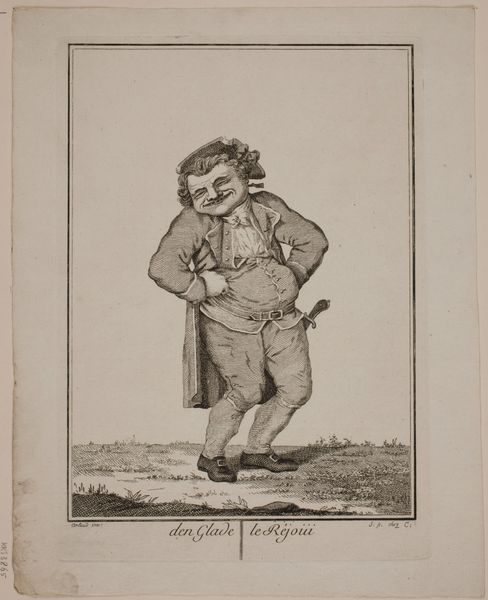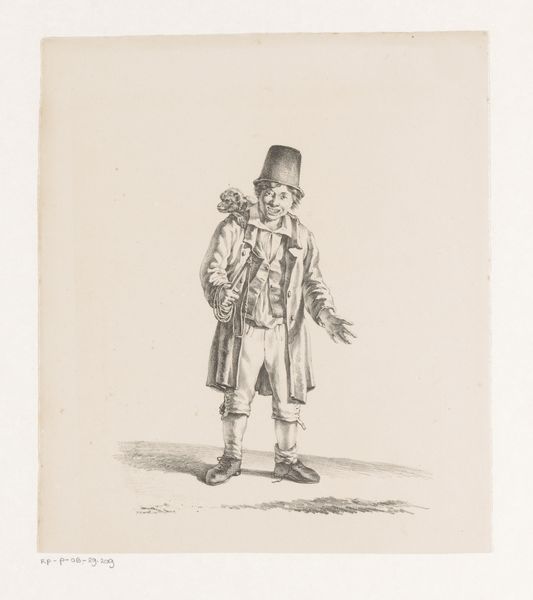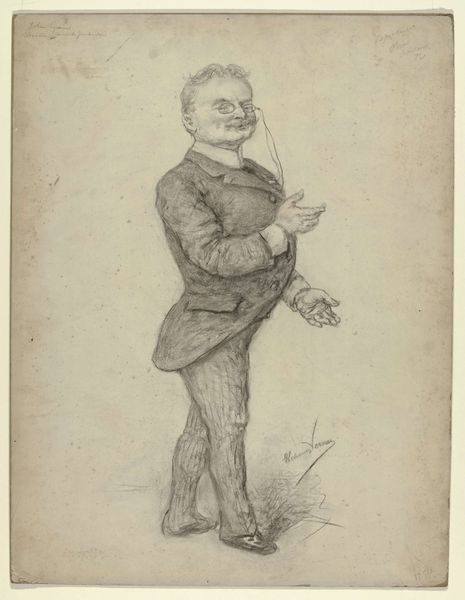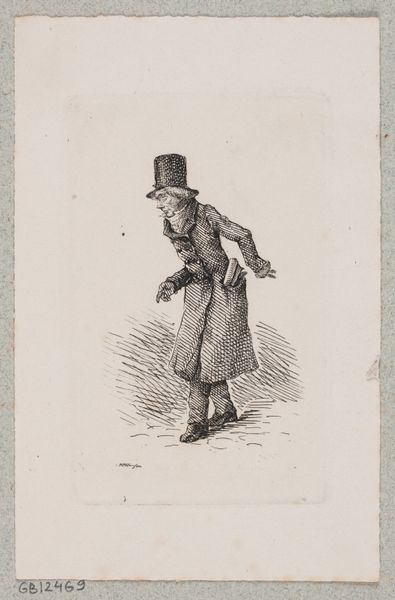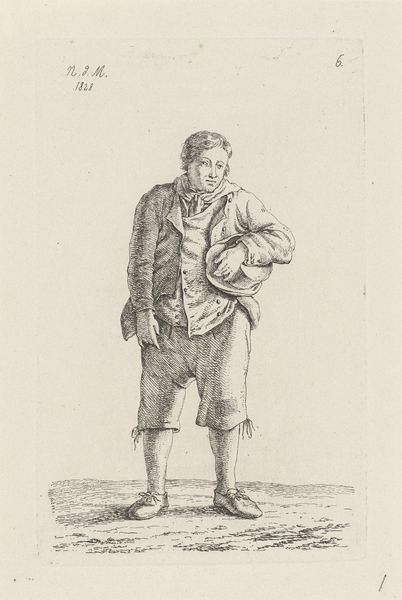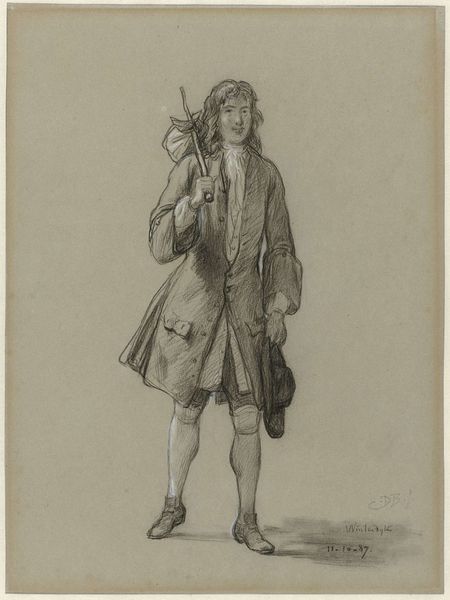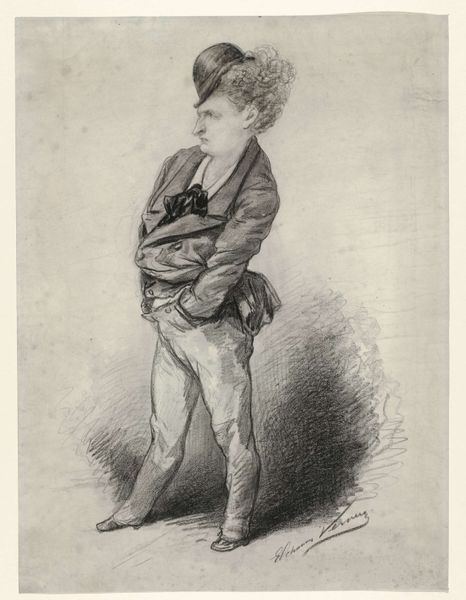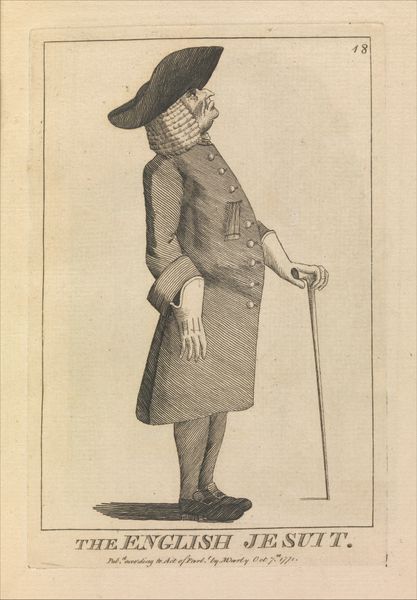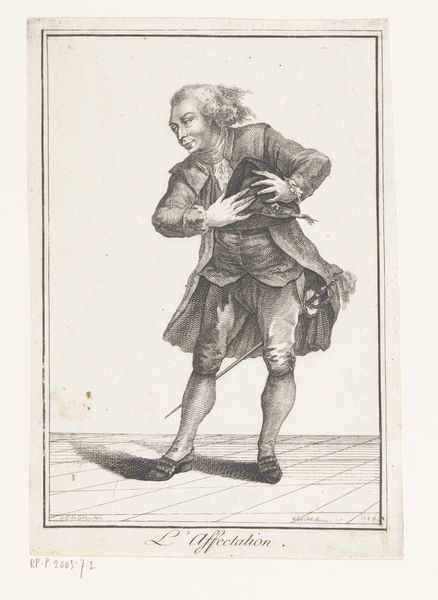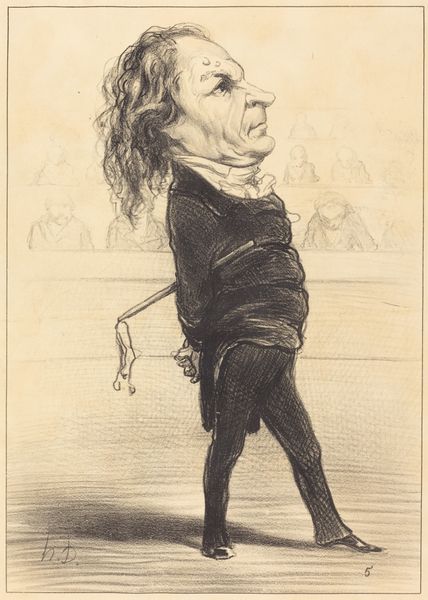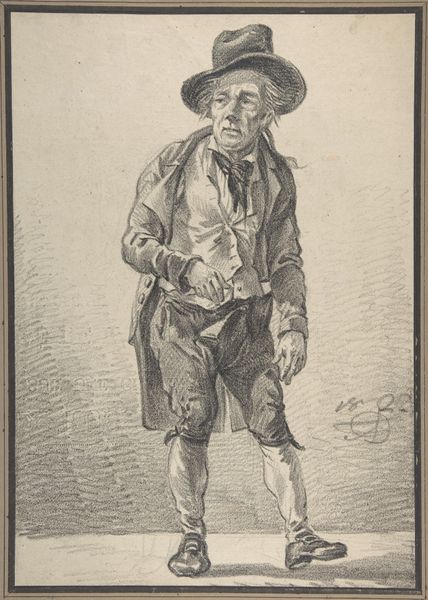
Dimensions: height 270 mm, width 175 mm
Copyright: Rijks Museum: Open Domain
Editor: This print by Louis Jaugey, titled "Jongen staand naast een troon," likely made sometime in the latter half of the 19th century, depicts a boy in elaborate costume standing near what looks like a throne. The engraving has this romantic flair to it, but the boy’s somewhat melancholic expression is interesting. What strikes you when you look at this? Curator: It's fascinating how Jaugey uses caricature in what appears to be a genre painting. The overt theatricality, his flamboyant costume, coupled with the prop throne—these are meant to convey status, perhaps mockingly so. What's key is the social context of this imagery. In the 19th century, there was a huge fascination with theatre and celebrity culture, and engravings made art accessible. Editor: You're saying this print allowed broader audiences to engage with this theatrical world? Curator: Precisely. Prints circulated widely. Notice how the inscription references "Le Chevalier Bijou" and "Chatte Blanche." These were probably popular plays or characters. It makes me wonder, was the boy some sort of child star? What did it mean to portray someone like this at that specific moment in time? It all ties into understanding the relationship between art, fame, and social identity. Editor: That’s a good question. So, instead of just seeing a portrait, we can consider what it meant to portray a child celebrity in this era, and how printmaking democratized access to that image. Curator: Exactly! By focusing on the circulation and reception of this work, we gain insight into the broader cultural landscape and the politics of representation in 19th century France. This wasn’t simply art for art’s sake. This was popular culture, designed for consumption and shaped by socio-political forces. Editor: I see what you mean. I initially focused on the aesthetic elements, but understanding the context gives it so much more meaning. Curator: Indeed. And thinking about how a print like this interacts with a public opens all sorts of new avenues for interpretation.
Comments
No comments
Be the first to comment and join the conversation on the ultimate creative platform.
